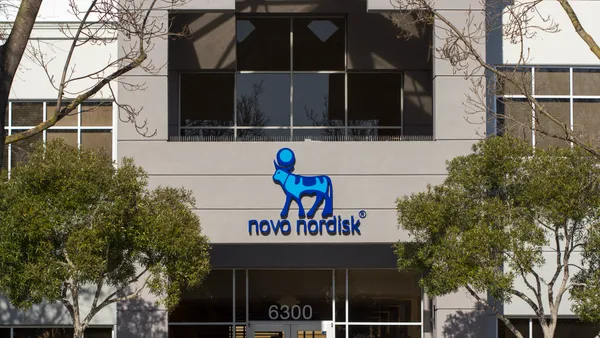30 Sep t e mb e r 20 07 VIEW on Marketing MEDIA MANAGEMENT lthough many people within the pharmaceutical industry predict� ed at the beginning of the decade that healthcare professionals would want product information to be provided via electronic media, print still remains a very important and impactful deliv� ery tool. The majority of healthcare professionals currently in practice still pre� fer hard copy, and the uptake of electronic media has been slower than expected.Younger physicians, nurse practitioners (NPs), physician assistants (PAs), and pharmacists have been exposed to more of the new electronic media tools in training, however, they still naturally seek printed product information. Delivery Methods The preferred delivery methods of print material are through sales rep� resentative distribution or direct mail. Fax also is used, but this medium is more common when extremely urgent messages need to be broadcast.To optimize the effectiveness of direct�mail marketing, reach and frequency are critical. With a direct�mail campaign, marketers need to employ a planned frequency strategy to allow companies to develop and maintain relation� ships with healthcare professionals. With more sales representatives demanding the time of increasingly time�strapped physicians, it is very challenging to get quality sales time with doctors and their staffs. Faced with this problem it is equally challenging to convey the complete and consistent messages that are needed to educate physicians about the product’s features and benefits in the hopes of impact� ing their prescribing habits. Marketers can effectively use direct mail to ensure that the complete message that needs to be communicated is deliv� ered to the prescriber. Developing a Direct�Mail Campaign In creating a mail campaign, the envelope should be engaging, with a message that is easy to identify. The contents of the mailing could include anything from a sell sheet, letter, PI, or reprint to a BRC or some other call� to�action message for marketing research to request samples or even a rep visit. Samples, for example, will allow the company to create its own database that can be used for frequent follow up with those targets.These tactics will support salesforce initiatives by allowing reps to follow up with the physicians and to discuss any communications they have received in the mail. A mail campaign also assists in reaching hard�to�see physicians, no�see physicians, and physicians who may be in territories without rep coverage. Proof of Impact Research continues to confirm the impact of mail. In a Benchmark Research report released in 2007, pharmacists, MDs, NPs, and PAs were asked to consider the printed material they regularly receive and to report whether they read mail, faxes, or medical journals first. . 46% of MDs prefer mail over medical journals or faxes . 49% of pharmacists prefer mail over medical journals or faxes . 70% of NPs prefer mail over medical journals or faxes . 57% of PAs prefer mail over medical journals or faxes The report confirms that pharmacists, doctors, NPs, and PAs prefer mail over journal messages. In the past several years it has become more important for pharma� ceutical brand marketers to understand the power of print and they are even more anxious to know how envelopes can deliver ROI for their products. A recent study was conducted with 1,000 primary�care physicians (HCPs). In this study the HCPs were mailed two waves of a one�page sell sheet on each of three different products. The study consisted of a new launch product, an actively promoted product, and a nonpromoted prod� uct.The third wave of the mailing contained a survey asking doctors if they received the information, recalled the promotional material sent, and if they read the materials. The response rate was overwhelmingly positive and demonstrated that mail works. . Launch Product — 17% response . Actively Promoted Product — 26% response . Nonactively Promoted Product — 17% response There has been a clear growth in nonpersonal communications and media choices over the years.A well thought�out media plan should include a mix of targeted programs. Even in this electronic age, mail continues to be the backbone of that plan. # /alert Marketing /ALERT MARKETING, East Rutherford, N.J., a division of Jobson LLC, provides the best media for the delivery of healthcare information and education to professionals and consumers. For more information, visit alertmarketing.com. The Power of Print There has been a clear growth in nonpersonal communications and media choices over the years. A well�thought out media plan should include a mix of targeted programs. Even in this electronic age, mail continues to be the backbone of that plan. Wendy Waerness Account Manager A 0907 PVV Layout 9/7/07 5:56 PM Page 30 PERQ Check Study Benchmark . 86% use/receive N.P./alert . Readership has grown 40% from 2002�2006 . 91% use/receive P.A./alert . Readership has grown 68% from 2002�2006 . 45.6% of M.D.s prefer mail over medical journals or faxes . M.D./alert was overwhelmingly preferred over any other direct mail vehicle . While physicians prefer a rep visit, mail was a very close second . Response rate of 59.2% confirms that N.P.s read N.P./alert . 69.6% of N.P.s prefer mail over medical journals or faxes . Response rate of 51.4% confirms that P.A/alert gets P.A.s attention . 57.0% of P.A.s read their mail before medical journals or faxes All the Data Points to Targeting Your Communications with /alert Marketing All the Data Points to Targeting Your Communications with /alert Marketing For more information on the proven non�personal communication programs /alert marketing has to offer, please call 1�800�4MAILING www.alertmarketing.com For more information on the proven non�personal communication programs /alert marketing has to offer, please call 1�800�4MAILING www.alertmarketing.com 9.5 X 11.5 BullseyeAd 8_17sc 8/17/07 11:50 AM Page 1
An article from


The Power of Print
Filed Under:
Commercialization








